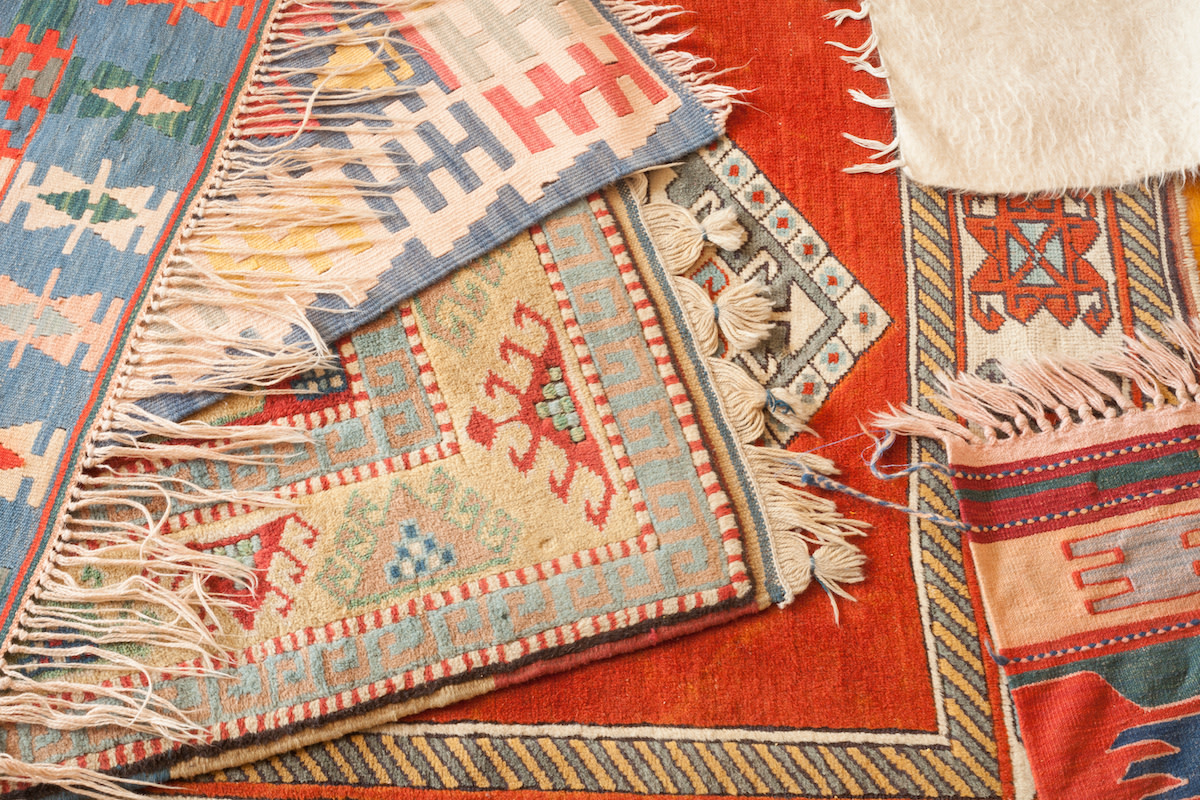How to Choose a Rug in 7 Steps
Written by MasterClass
Last updated: Mar 2, 2022 • 4 min read
Selecting the perfect rug for your room can be challenging, but following the right design tips can make the process far more manageable. Read on to learn how to choose a rug for any location in your home.
Learn From the Best
What Is a Rug?
A rug is a floor covering woven out of synthetic or natural fibers. This moveable covering usually covers part of a bare, uncarpeted floor, unlike wall-to-wall carpeting, which covers an entire room. Rugs may display patterns and come in various styles, which requires decorators to consider how the aesthetic will match the rest of the room.
How to Arrange a Rug in Any Room
Follow these general rules for arranging a rug in any room of your house.
- Bedroom: When arranging a large area rug in a large room, it should have enough surface area to contain your bed and nightstands. If you’re working with a small space, the bedroom rug only needs to contain the lower third of the bed, and not the side tables. In both cases, there should be at least a foot of rug around every side of the bed for your feet to land on.
- Dining room: Choose a dining room rug that matches the shape of your dining table; round rugs fit circular tables, and rectangular rugs fit similarly shaped tables. Select a rug that has about two feet of material outside of the edges of your table so that dining chairs don’t slide off of it when pulled out.
- Entryway: A long narrow runner made of a foot traffic–friendly durable material is perfect for entryways and hallways.
- Kitchen: Less is more when it comes to kitchen carpets. A small two-by-three foot rug or mat in front of your sink should be sufficient. A runner is a great option for galley kitchens with a narrow space down the middle. Even a small homemade rug will work. Make sure the rug is in the center of the space for aesthetic balance.
- Living room: As a rule of thumb, if your living room floor plan includes a seating area independent from a wall—like a couch, coffee table, loveseat, and accent chairs—the pieces should all sit inside the perimeter of the rug. If your couch rests against a wall, position its front legs on the rug.
- Patio or deck: Choose an outdoor rug that’s one to two feet smaller than the perimeter of your space. If you prefer not to cover most of your floor space, choose a smaller rug size that lies two feet out from the edge of the table.
How to Choose a Rug
Follow these tips to find the best rug for your specific space.
- 1. Measure your space. Before going rug shopping, measure the space you want to cover, and include the furniture that will anchor your floor covering. Consider mapping the area out in painter’s tape to ensure that you can arrange your furniture properly.
- 2. Pick the right style. Contemplate the décor of your room, and consider the type of rug that is most suitable. For instance, a sisal or jute rug conveys a casual style. A dhurrie, kilim, or shag rug lends a more bohemian ambiance. Geometric, farmhouse, and mid-century style rugs complement modern room décor. Traditional Persian, Moroccan, or Oriental rugs lend themselves well to eclectic design.
- 3. Consider the material. Natural fiber rugs (like those made of silk, cotton, and wool) are much pricier than synthetic fiber rugs, but they are more durable and will likely last longer than flooring made from artificial materials. If you have young children or pets, prioritize synthetic fiber carpets (which are easier to clean). Also, consider the practicality of the rug’s material in any given location. For example, a kitchen runner should be stain-resistant due to its proximity to food and drink, and an outdoor rug should be weatherproof.
- 4. Contemplate foot traffic. Low pile rugs—with flat weaves created in a loom—are ideal for high-traffic areas since they’re easy to vacuum and clean. High pile rugs—with open weaves, like shag—are perfect for a lush and cozy vibe that’s soft to the touch but will likely get dirty and lose their volume with lots of foot traffic.
- 5. Choose between solid colors or patterns. If your walls and furniture are mostly solid colors, use a patterned rug to draw the eyes to the center of the room. Opt for a rug featuring a single solid color if you have patterned wallpaper or furniture. If you’re shopping online, inquire about the store sending you swatches in the mail, so you can ascertain that you like the pattern up close.
- 6. Layer complementary rugs. Layering rugs can enhance their textures and add depth to the space. For example, pairing a square flat large rug with a complementary-colored, smaller, circular shag rug adds variety and dimension.
- 7. Invest in a rug pad. A rug pad goes underneath the carpet and the floor to protect its fibers and prevent the rug from sliding. Buy cushioned rug pads to make every step on your new rug feel like you’re walking on a cloud.
Ready to Give Your Space a Chic Update?
Master everything from color theory to pattern mixing with the MasterClass Annual Membership and exclusive lessons from award-winning interior designers like Kelly Wearstler and Corey Damen Jenkins. From shopping for statement furniture to designing a lighting scheme to choosing the newest member of your plant family, the skills you’ll pick up are sure to make your house, apartment, or condo feel even more like a home.
